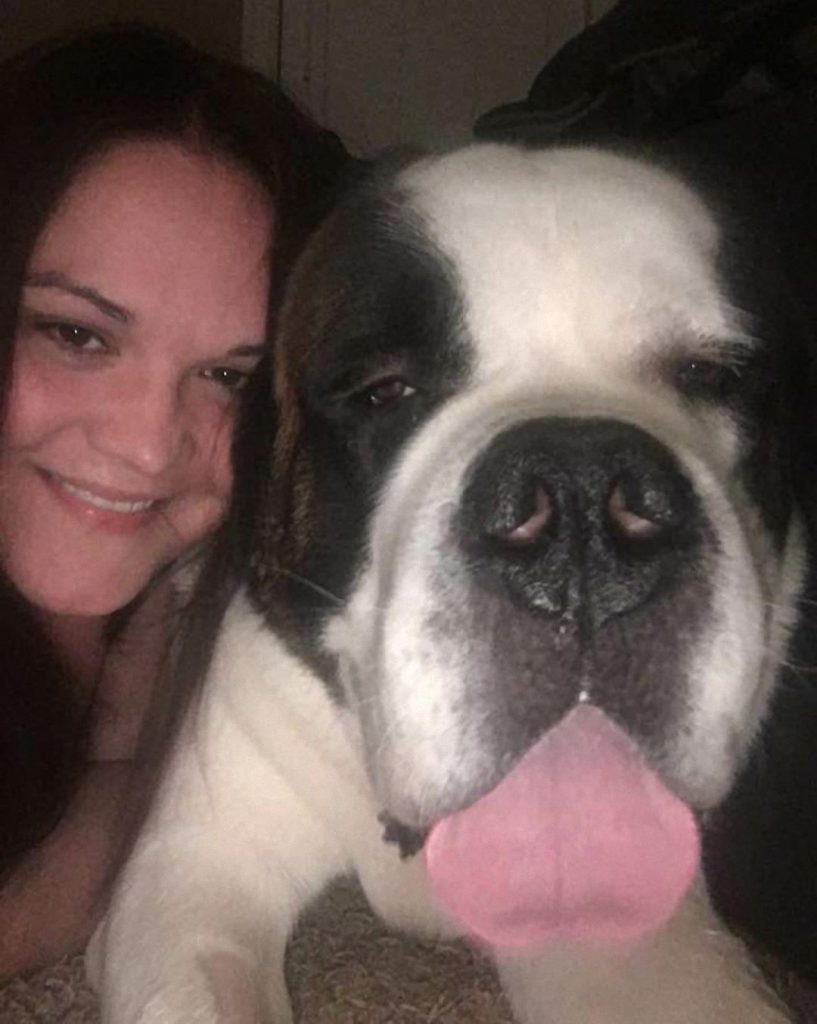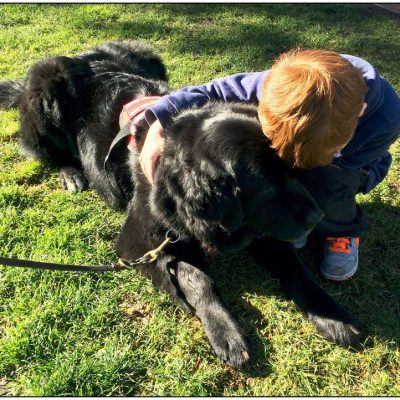The Human-Animal Bond is a concept developed to explain the curious affinity between people and animals.
At AAD, we seek to develop a bond within each working team that is based on mutual respect and affection. We believe this foundation is an important component, not just for allowing the service dog to keep an autistic child safe, but also by providing a social-psychological bridge for the adult handler and the autistic child.

Through this inter-species exchange, various ties (mostly non-verbal) are created, some of which include the confidence the service dog will do its job, the respect of the adult handler to give appropriate commands and to reward the dog’s work, the adherence to the physical boundaries set, and the unconditional calming love the child receives from the dog. These help to guide behavior and develop appropriate empathetic responses. These elements foster a strong bond that continually develops and grows over the lifetime of the service dog and its daily activities with its adopted family. This bond is primarily with the adult handler, and secondly to the child with autism.
The primary bond is response-driven due to the adult handler providing direction and issuing commands to the team. Also, the adult is the one who feeds, grooms, harnesses, and rewards the service dog for the work done. The service dog learns to turn to the handler for direction and affection. This bond is essential to maintain the necessary teamwork and for the continued willingness of the service dog to obey commands in both private and public settings. It must be noted that there is a trade-off when working with a service dog in public – the dog may relieve one stress in exchange for another. For example, the hyper-vigilance of the responsible adult can be relaxed when the child is harnessed appropriately to the dog and the adult is directing the team, but it must be balanced with an increase in time devoted to grooming, feeding, and the behavioral maintenance of the dog. In order for the relationship to truly flourish the handler must be aware of the additional time demands required when incorporating a service dog into the family.

The secondary bond is between the service dog and the autistic child. This is specific to each individual child and can be curiously structured and somewhat amorphous or undefined.* This is because each autistic child is different and has various reactions. What research has revealed is that over time, non-verbal autistic children become more able to focus, occasionally develop language skills around the service dog, and show a decrease in anxiety behaviors (i.e. running, hand flapping, tantrums, etc). These are accompanied by decreases in cortisol levels.1 The speculation for this change in emotional state is due to the service dog entering into and impacting the child’s daily life. There seems to be a pacifying effect on the child’s behavior because the service dog appears to promote either a reduction in anxiety behaviors or provides a living, mobile transitional object that promotes security in a changing world. This speculation requires more research to define the source(s) of the bond through observation, data collection, and conversations with verbal autistic children over time to evaluate the individual bond and its daily impact on an autistic child.
We do know a service dog changes an autistic child’s life for the positive. An anchoring dog helps to keep the eloping autistic child safe and calms anxiety. We are proud to offer these highly trained gentle giants, and through their integration with a family provide an extended human-animal bond that only grows stronger with time.
1 Burrows K. E., Adams C. L., and J. Spiers. 2008. Sentinels of safety: Service dogs ensure safety and enhance freedom and well-being for families with autistic children. Qualitative Health Research 18, 1642–1649. https://journals.sagepub.com/doi/abs/10.1177/1049732308327088
*AAD would like to encourage research in this area. There is little published in the field of children and the impact service dogs can have on their lives. We need someone willing to follow a group of placed service dogs for the seven years of their service work life, and their impact on the child and/or family. This would be a great project for a graduate student looking for a master’s or doctorate thesis project and additional peer-reviewed publishing opportunities. Please contact us to discuss.